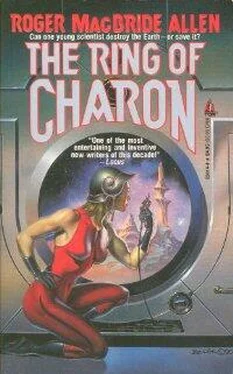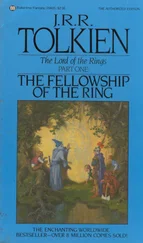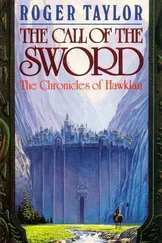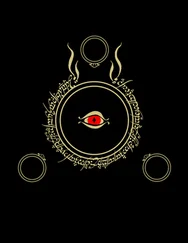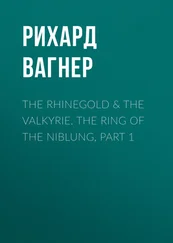Roger Allen - The Ring of Charon
Здесь есть возможность читать онлайн «Roger Allen - The Ring of Charon» весь текст электронной книги совершенно бесплатно (целиком полную версию без сокращений). В некоторых случаях можно слушать аудио, скачать через торрент в формате fb2 и присутствует краткое содержание. Год выпуска: 1990, ISBN: 1990, Издательство: Tor Books, Жанр: Фантастика и фэнтези, на английском языке. Описание произведения, (предисловие) а так же отзывы посетителей доступны на портале библиотеки ЛибКат.
- Название:The Ring of Charon
- Автор:
- Издательство:Tor Books
- Жанр:
- Год:1990
- ISBN:0-812-53014-4
- Рейтинг книги:5 / 5. Голосов: 1
-
Избранное:Добавить в избранное
- Отзывы:
-
Ваша оценка:
- 100
- 1
- 2
- 3
- 4
- 5
The Ring of Charon: краткое содержание, описание и аннотация
Предлагаем к чтению аннотацию, описание, краткое содержание или предисловие (зависит от того, что написал сам автор книги «The Ring of Charon»). Если вы не нашли необходимую информацию о книге — напишите в комментариях, мы постараемся отыскать её.
The Ring of Charon — читать онлайн бесплатно полную книгу (весь текст) целиком
Ниже представлен текст книги, разбитый по страницам. Система сохранения места последней прочитанной страницы, позволяет с удобством читать онлайн бесплатно книгу «The Ring of Charon», без необходимости каждый раз заново искать на чём Вы остановились. Поставьте закладку, и сможете в любой момент перейти на страницу, на которой закончили чтение.
Интервал:
Закладка:
“Could they measure, say, a millisecond one-tenth push-pull gee burst? Something like that, a million times more powerful that what they’re used to getting from us?”
Suddenly Sondra understood. “You want to amplify the gee field with your process and then beam it to them!”
Larry grinned wickedly. “That’ll make them sit up and take notice, won’t it?”
Sondra thought for a moment, and the more she thought, the more she liked the idea. By its very nature, the experiment would attract attention to Larry’s amplification effect. Attention, hell! It would blow the doors off gravity detectors all over the System. Every gravity researcher between here and the Sun would be certain to hear about it within hours, and all of them would be clamoring for more information, more verification.
That was Larry’s idea, obviously, to get the news of the Chao Effect off Pluto, spread out as far and wide as possible.
“It ought to work, Larry,” she said. “No doubt about it, it ought to work. If we can set up the Ring to amplify the gravity field, modulate it, and collimate the gravity waves.”
“That side of it I know we can do. I’m just worried about their seeing it at the other end and being able to measure it.”
“Don’t worry about it. All of those labs run their detectors twenty-four hours a day, recording their reading constantly. The detectors are built to operate and record automatically, to prevent a sloppy operator from missing something. If we can send it, they’ll see it.”
“Then let’s give them something to see,” Larry said, sitting down at the controls.
Long before the Ring of Charon was first powered up, astrophysics had ceased to be a strictly observational science. Active experiments, involving massive energies, were common. Not only at the Ring, but at facilities large and small across the System, powerful forces were being explored.
Unfortunately, there were also many observatories, on Earth and in space, designed to detect incredibly weak signals from millions of light-years away. Too much input could destroy them easily. The high-energy experimenters had it beaten into their heads that they must give broad notification of their plans, offering plenty of time to shut down delicate gear. Failure to do so risked destroying some colleague’s delicate detection gear halfway across the Solar System.
There was another, more complex reason for thorough warnings of experiments. Back in the old days, when all the observatories were on Earth, or within the orbit of the Moon, it was always possible to call on the phone with late-breaking news, so as to get a second observation of the phenomenon in question. Coordinating observations between two or more observatories was at least reasonably straightforward. Even in cases where the observation had to be synchronized to the nanosecond, there was no great problem when the two points were tiny fractions of a light-second apart. However, the speed of light had changed the forms of etiquette: phones and easy synchronization were out of the question once there were observatories orbiting every planet from Mercury to Saturn. A wave of light energy that passed Saturn might not cross Earth’s path for four hours. A two-way contact, query and reply, would take eight hours.
Communications workers invented the event radius to handle this sort of problem, and the astronomers eagerly took it up.
Consider how electromagnetic signals move. All of them move at the speed of light, and unless manipulated by a focusing device, all types of electromagnetic radiation (for example, lightwaves or radio signals) radiate out from a given point on the surface of a sphere that is expanding at the speed of light. Think of a dot drawn on the surface of an inflating balloon. The dot, representing a signal, moves outward, riding the skin of the balloon as it expands.
The distance between that dot and the center of the balloon, between the surface of the radiative sphere and the center of radiation, is an event radius.
No data about a given event can be received until the dot, the information, passes through the observer as the information sphere expands at the speed of light. Event radii can be measured in conventional linear measures, but it is generally more convenient to refer to them in light-time. Thus, Earth’s distance from the sun, one hundred fifty million kilometers, is an event radius of about eight light-minutes. If the Sun blew up, Earth would not know it for eight minutes.
But knowing the light-time distance was not the only problem. At times the situation grew even more frustrating as the movement and gravity wells of the planets themselves introduced slight redshifting problems and microscopic time-dilation effects. More than once, careers were saved or wrecked by the discovery of an error in compensating for those effects.
Webling had sent out a standard notice of her planned experiment hours before. Larry and Sondra knew they had to send out advance warning of their modifications of the experiment, but they were nervous about doing it. Yet without the warning, they would infuriate any number of other experimenters. Not a good idea for an experiment that was half public relations.
Sondra drafted the notice to JPL:
ALERT TO JPL GRAVITY LAB: THIS WILL SERVE AS NOTICE OF A MODIFIED COLLIMATED GRAVITY-WAVE PROCEDURE. TIMES OF TRANSMISSION TO YOU AND OTHER SENSOR LABS UNCHANGED, BUT NEW TECHNIQUE SHOULD PERMIT 10 TO SIXTH INCREASE IN POWER TRANSMISSION. PLEASE RIG FOR MORE POWERFUL INPUT AND ADVISE AFFECTED LABS.
They sent similar messages to the other participating labs, warning them of the high-power pulse on the way, requesting relay to other facilities that might be affected.
It seemed more than a bit foolhardy to be doing a secret experiment while providing a general warning that it was about to happen. The speed of light came to their rescue. Sondra was careful to send the alerts through the station’s automated signal system, without any human intervention. Many eyes on many worlds would read their messages, but no one on Pluto would know what was up until queries and replies came back from those labs. And by then, of course, it would be far too late to stop the experiment.
Figuring in speed-of-light delays, there would be nearly an eight-hour lag between the send-off of the warning to the closest lab on Saturn, and the earliest possible response back to Pluto.
That should serve as protection enough, so long as no one at the base noticed what they were up to in real time. To avoid that problem, Sondra and Larry agreed to stay as close as possible to Webling’s original experiment design, in the hope of avoiding premature attention.
Given the difficulties of aiming the untested graser system, Webling had designed the original run to hit the closest, easiest target first and work out to longer range from there. The positions of the planets dictated that Saturn be the first target. Sondra used the original aiming data as she set up the run.
It was a complicated job. She glanced again at the chronometer when she was halfway through it. Three hours until this control room had its shot at the Ring. She sighed and went back to the complex job of resetting the controls.
With a beep and a flashing green light, the control panel announced that the Ring was ready for the graser run.
With ten minutes to spare, the myriad magnets, coolant pumps, mass drivers, particle accelerators and other components of the Ring system were configured to form a Chao Effect-amplified gravity well, to modulate and to collimate the gravity waves from it, and to fire tight pulses of collimated gravity power toward Titan.
Or at least, Sondra thought they were ready. She took another look at the control system. This was definitely a wild setup. No wonder the station’s old fogies hadn’t been able to believe it.
Читать дальшеИнтервал:
Закладка:
Похожие книги на «The Ring of Charon»
Представляем Вашему вниманию похожие книги на «The Ring of Charon» списком для выбора. Мы отобрали схожую по названию и смыслу литературу в надежде предоставить читателям больше вариантов отыскать новые, интересные, ещё непрочитанные произведения.
Обсуждение, отзывы о книге «The Ring of Charon» и просто собственные мнения читателей. Оставьте ваши комментарии, напишите, что Вы думаете о произведении, его смысле или главных героях. Укажите что конкретно понравилось, а что нет, и почему Вы так считаете.
